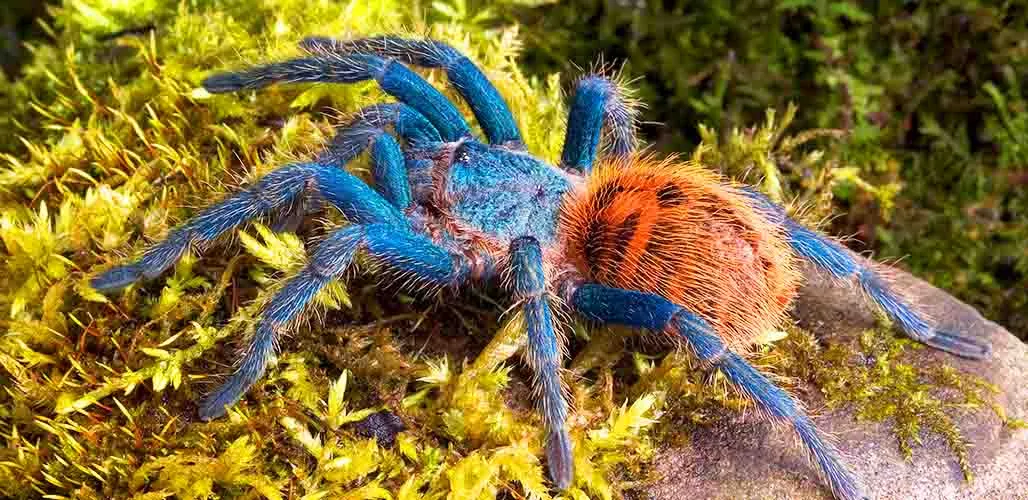Green Bottle Blue Tarantula (GBB) 5 Fascinating Facts
The Green Bottle Blue Tarantula (GBB), Chromatopelma cyaneopubescens, is a striking and captivating spider, highly sought after by both novice and experienced arachnid enthusiasts. Their vibrant colors and relatively docile nature make them a popular choice. This article delves into five fascinating facts about the GBB, providing insights into their appearance, habitat, behavior, diet, and care requirements. Get ready to discover why the GBB is a true gem of the tarantula world. Understanding these facts will not only enhance your appreciation for these creatures but also help you provide the best possible care if you are considering adding one to your family. From their stunning coloration to their interesting feeding habits, the GBB has much to offer, making it a rewarding subject of study and admiration.
GBB Fact 1 Appearance
The GBB’s most distinguishing feature is its vibrant coloration, a spectacle of nature’s artistry. The carapace, or upper shell of the cephalothorax, is a rich, iridescent green or gold, creating a metallic sheen that catches the light beautifully. The legs are a striking blue, which contrasts dramatically with the carapace, and the abdomen is often a dark blue with reddish hairs, completing a stunning color palette. This combination of colors is what gives them their common name, the Green Bottle Blue. Their appearance is not just for show; it likely plays a role in camouflage and communication within their natural habitat. The intensity of their colors can also vary slightly depending on their age, health, and the conditions in which they are kept. Their beauty makes them one of the most visually appealing tarantulas.
Coloration and Physical Traits
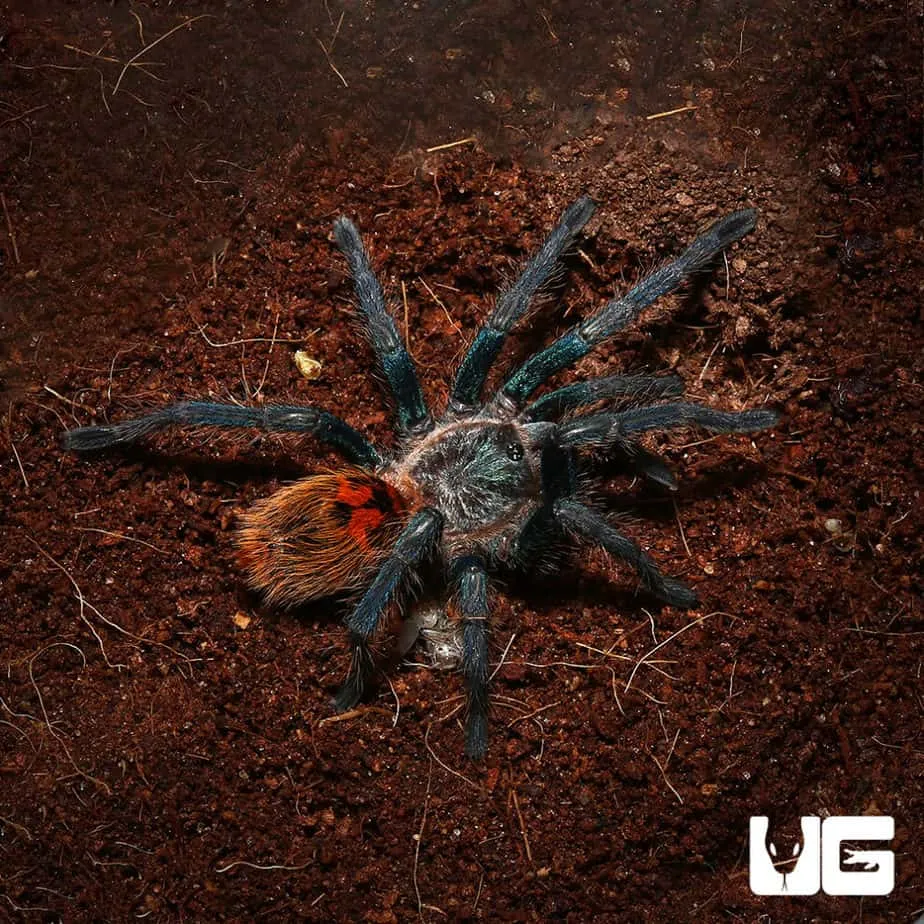
Beyond the color, GBBs have typical tarantula characteristics. They are covered in fine hairs, which they use to sense their environment. Like all tarantulas, they have eight legs, two pedipalps (used for sensing and manipulating food), and a pair of chelicerae, which are the fangs. Their bodies are divided into two main parts: the cephalothorax (head and thorax combined) and the abdomen. The size of a GBB can vary, with females generally being larger than males. The overall appearance is robust, and they have a presence that is both beautiful and intimidating. The combination of colors and physical traits makes them an amazing example of invertebrate beauty.
Size and Lifespan
Adult female GBBs can reach a leg span of up to 6 inches (15 cm), while males are often slightly smaller. The lifespan of a GBB varies depending on sex. Females can live for 10-12 years or even longer with proper care, while males typically live for only 2-3 years after reaching maturity. This difference in lifespan is common among tarantula species. Proper care, including a suitable diet, appropriate housing, and correct environmental conditions, is crucial for maximizing their lifespan and ensuring their well-being. The size and longevity of the GBB make them a long-term commitment, and prospective owners should be prepared to provide for their needs over an extended period.
GBB Fact 2: Native Habitat
The Green Bottle Blue Tarantula is native to the Paraguaná Peninsula in Venezuela. They are found in arid and semi-arid environments, which play a crucial role in understanding their care requirements in captivity. Their natural habitat is characterized by dry conditions and warm temperatures, which significantly influences their behavior and survival strategies. Understanding their native environment allows for better replication of their natural needs in a captive setting. This helps ensure the tarantula thrives and displays its natural behaviors. Their ability to survive and flourish in these harsh conditions is one of the reasons they are such an interesting species to study and observe.
Geographical Location
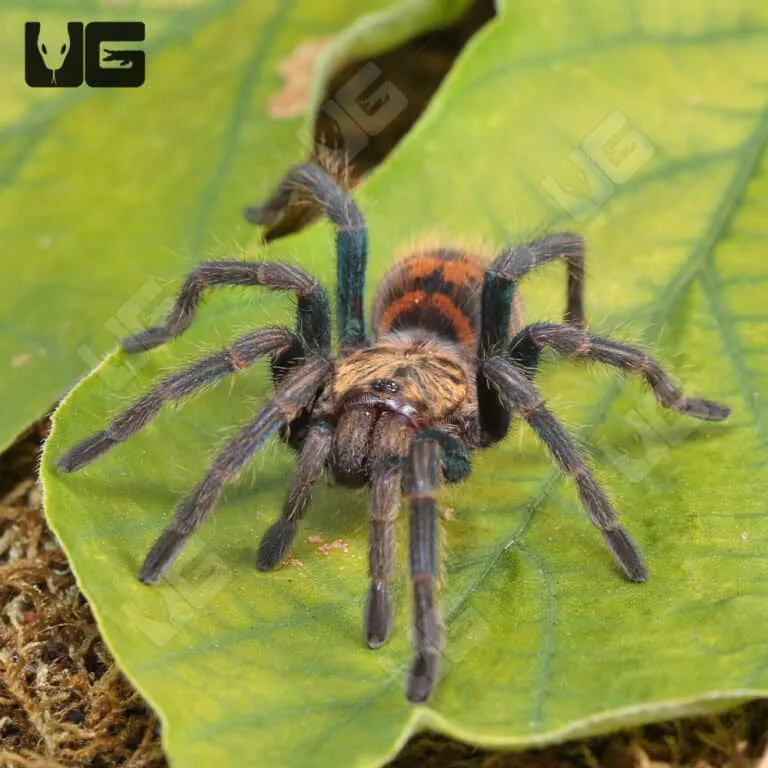
The Paraguaná Peninsula, a region in northwestern Venezuela, is the exclusive natural habitat of the Green Bottle Blue Tarantula. This region features unique geographical characteristics, including a diverse range of microclimates and varied terrains, from dry scrublands to coastal areas. The peninsula’s isolated location contributes to the tarantula’s unique adaptations and characteristics. The specific environmental conditions provide the perfect setting for the GBB to thrive. Preserving this natural habitat is essential for the survival of the species in the wild, and conservation efforts are important to consider.
Environmental Conditions
The environmental conditions in the GBB’s natural habitat are key to their survival. These spiders prefer warm temperatures, typically ranging from 75-85°F (24-29°C), and low humidity levels, around 60-70%. The dry environment helps prevent fungal growth and other diseases. GBBs are often found in areas with sparse vegetation, such as shrubs and low-lying plants. These environmental conditions significantly impact their activity levels, molting frequency, and overall health. Replicating these conditions in captivity is crucial for their well-being. Providing the right balance of heat, humidity, and a suitable substrate is key to maintaining a healthy GBB.
GBB Fact 3: Temperament and Behavior
GBBs are generally considered a more skittish tarantula species. They are known for their speed and agility. They are not particularly aggressive, but they can be defensive and will readily retreat to their burrows or flick urticating hairs (small, irritating hairs) as a defense mechanism. While they are beautiful, they are not ideal for frequent handling. Understanding their temperament is important for safe and responsible ownership. Their behavior in the wild provides clues on how they will react to different situations. The way they interact with their environment gives insights into their needs and how to best care for them.
Defensive Mechanisms
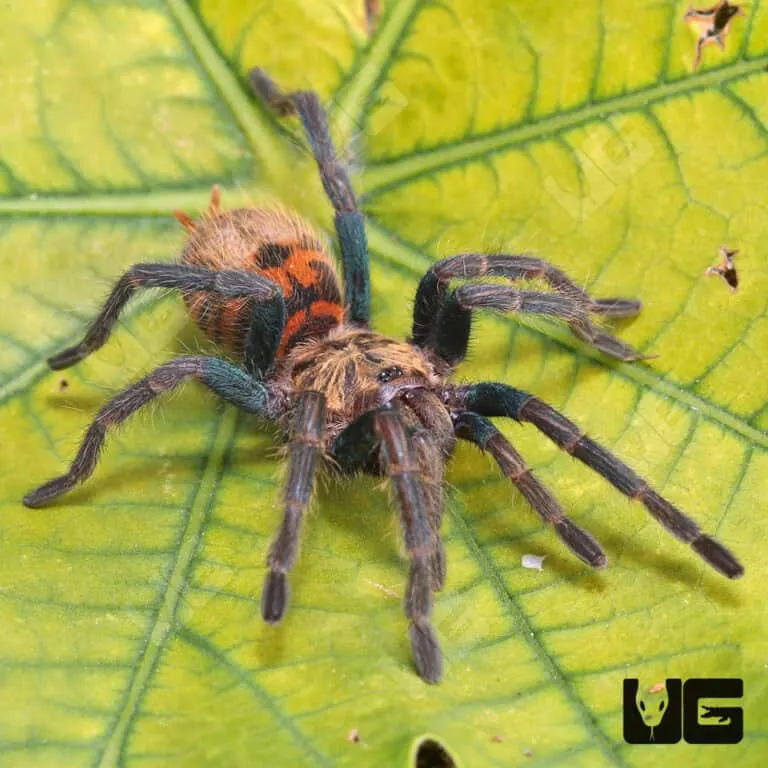
The GBB has several defensive mechanisms. Their primary defense is their speed; they can quickly retreat to their burrow when they feel threatened. They will also flick urticating hairs from their abdomen. These hairs can cause skin irritation and discomfort if they come into contact with the skin. In rare cases, they may bite, but this is usually a last resort. Recognizing these defensive behaviors is important when interacting with them. Always handle them with care and respect to minimize stress and the risk of defensive reactions. Understanding these mechanisms provides insight into their behavior and enables safer handling practices.
Activity Levels
GBBs are typically most active during the evening and nighttime hours. They often spend the day hidden in their burrows or under shelter, emerging at dusk to hunt and explore their surroundings. This nocturnal behavior is a common adaptation among tarantulas. Their activity levels can be influenced by environmental factors, such as temperature and humidity. A well-maintained environment that provides the right conditions can promote natural behaviors. Observing their activity patterns is a fascinating aspect of owning a GBB and provides insight into their needs.
GBB Fact 4: Diet and Feeding
The GBB is a carnivore and primarily feeds on insects in the wild. Their diet consists of a variety of prey, including crickets, roaches, and other small invertebrates. Understanding their dietary needs is crucial for providing proper care in captivity. A balanced diet supports their overall health and growth. Careful attention should be paid to the size of the prey to prevent injury or choking. Feeding your GBB is a very important part of its care and well-being. The right food will keep them happy and healthy.
Food Preferences
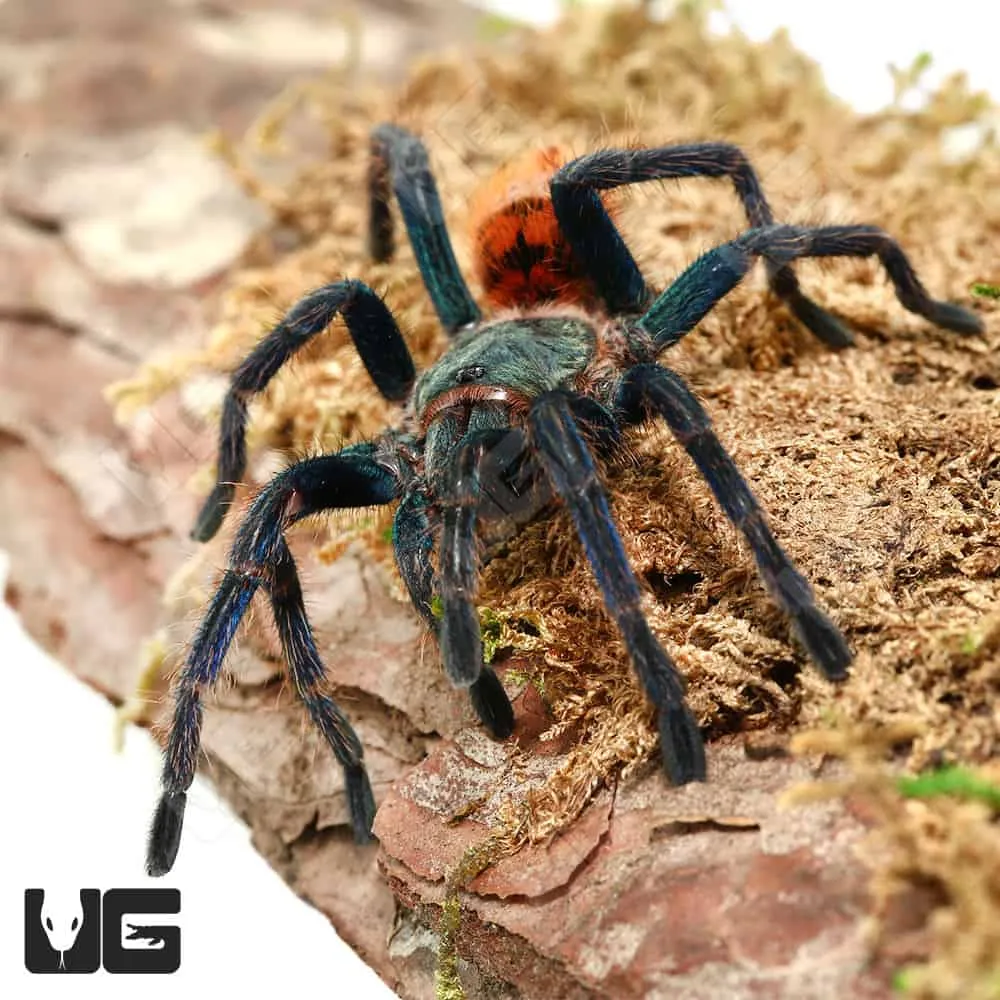
In captivity, GBBs readily accept a variety of insects. Crickets and roaches are common staples, and they also enjoy mealworms, superworms, and even small pinkie mice (for adults, but with caution). Variety in their diet can provide a wider range of nutrients. The size of the prey should be appropriate for the size of the tarantula. Always ensure that the prey is pesticide-free and healthy. Providing a varied and nutritious diet is a key aspect of responsible GBB ownership. You can provide food that offers both nutrition and enrichment for the spider.
Feeding Frequency
Feeding frequency depends on the age and size of the GBB. Spiderlings and juveniles should be fed more frequently, approximately 2-3 times per week. Adult GBBs can be fed every 1-2 weeks. It’s important to remove any uneaten food within 24 hours to prevent mold growth. Always provide a shallow dish of fresh water. The feeding schedule should be adjusted based on the tarantula’s appetite and condition. Overfeeding can lead to obesity, while underfeeding can stunt growth. Carefully monitoring your tarantula will ensure they are getting the right amount of food.
GBB Fact 5: Captive Care
Caring for a GBB in captivity involves providing the right environment and meeting their specific needs. This includes appropriate housing, temperature, humidity, and substrate. Proper care is essential for their health, well-being, and longevity. A well-maintained enclosure that mimics their natural habitat is key. You need to understand the conditions to ensure your GBB thrives. By following some basic steps, you can provide a great home for your spider. The right care will give you years of joy watching your GBB.
Housing Requirements
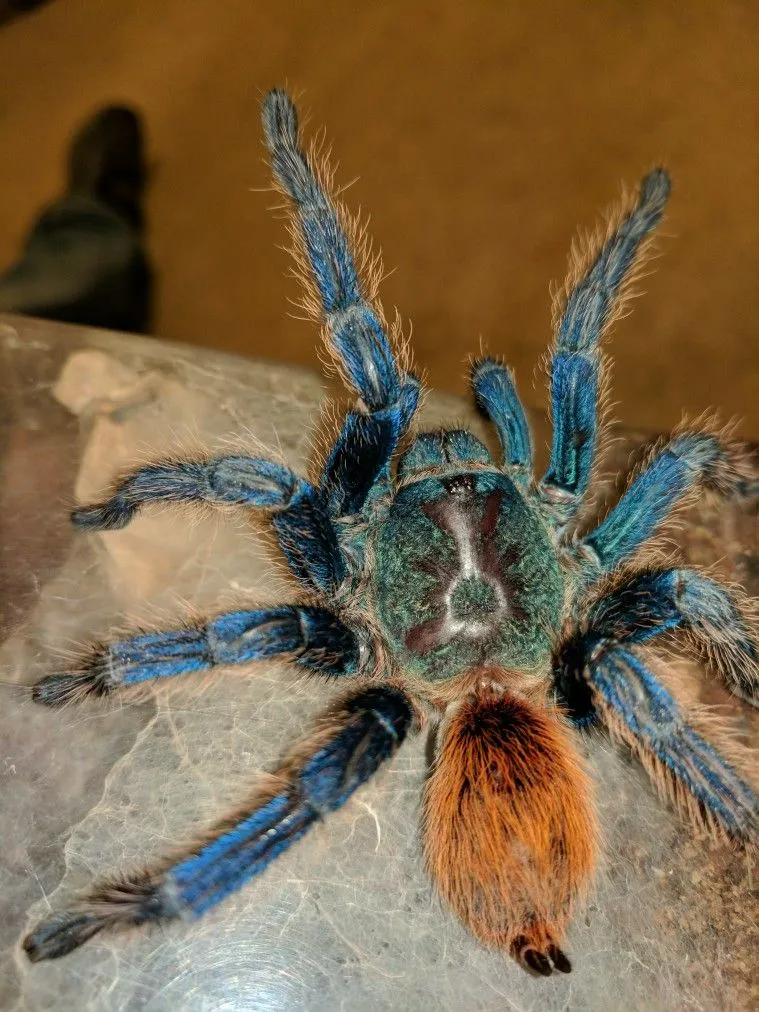
GBBs thrive in a well-ventilated enclosure. A glass or acrylic terrarium is ideal. The size of the enclosure should be appropriate for the tarantula’s size. A juvenile GBB can live in a smaller enclosure, whereas an adult will need a larger one to move and explore. A substrate of coco fiber, peat moss, or a mix of the two is recommended. Providing decorations, such as cork bark or artificial plants, can offer hiding places and enrichment. Always ensure the enclosure is secure and escape-proof. The right housing will support the well-being of your GBB.
Humidity and Temperature
Maintaining the correct humidity and temperature levels is crucial for GBB health. A temperature range of 75-85°F (24-29°C) is ideal. Use a heat lamp or under-tank heater to maintain the temperature. Humidity levels should be kept relatively low, around 60-70%. Use a hygrometer to monitor humidity levels. Provide a shallow water dish for drinking, and mist the enclosure lightly once or twice a week. Proper ventilation is essential to prevent the buildup of humidity and mold. These conditions will help your GBB thrive and remain healthy. Monitoring and maintaining proper conditions are key to long-term well-being.
In conclusion, the Green Bottle Blue Tarantula is a stunning and fascinating creature. Their vibrant appearance, unique habitat, intriguing behavior, and specific care requirements make them a rewarding pet for many arachnid enthusiasts. By understanding the five fascinating facts presented in this article – their appearance, native habitat, temperament, diet, and captive care – you can ensure a healthy and fulfilling life for your GBB. Always remember to research and understand the needs of any pet before bringing it home. With proper care, the Green Bottle Blue Tarantula can be a long-lived and captivating addition to your home.
